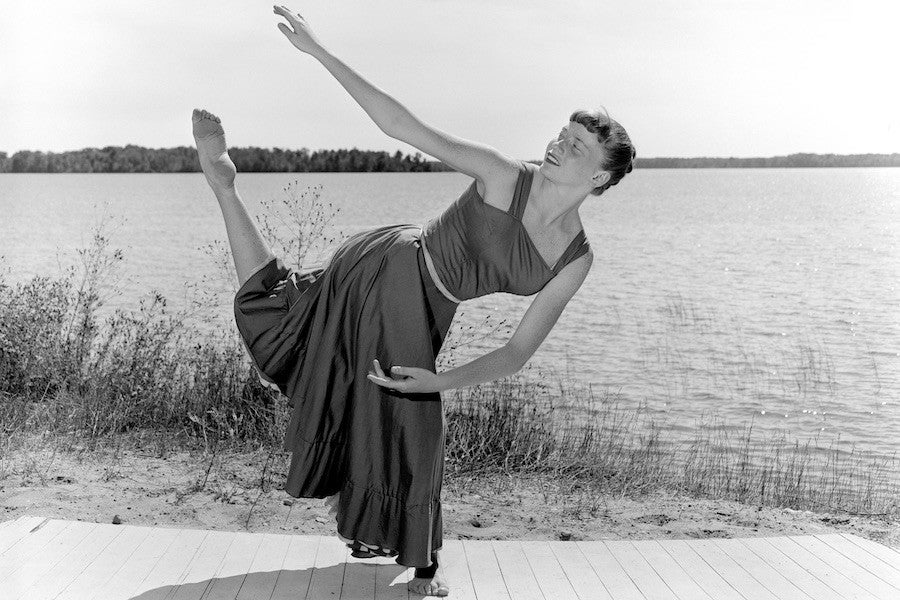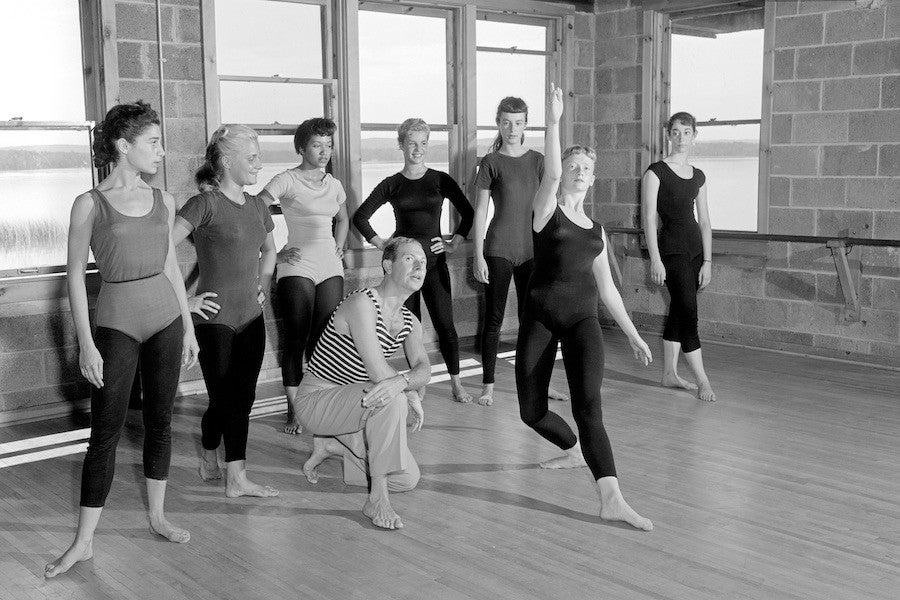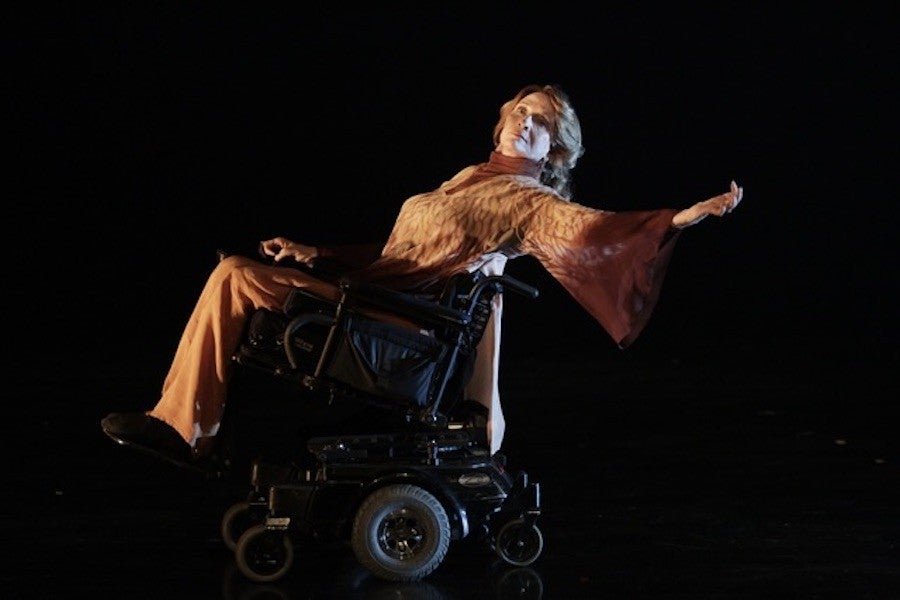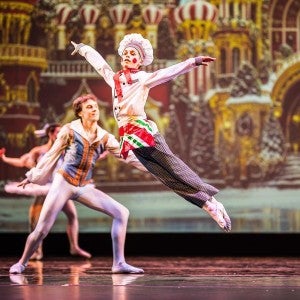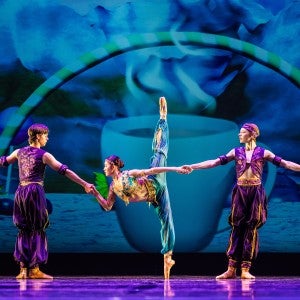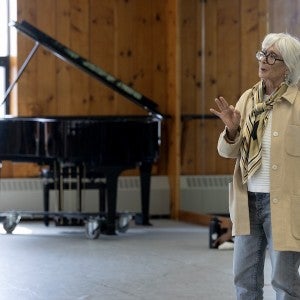Holocaust survivor and disability dance advocate Ginger Lane shares her story: “I owe it all to Interlochen”
Lane went from hiding from the Nazis in a laundry shed to studying dance at Interlochen. Now, she leads a vibrant career in Chicago.
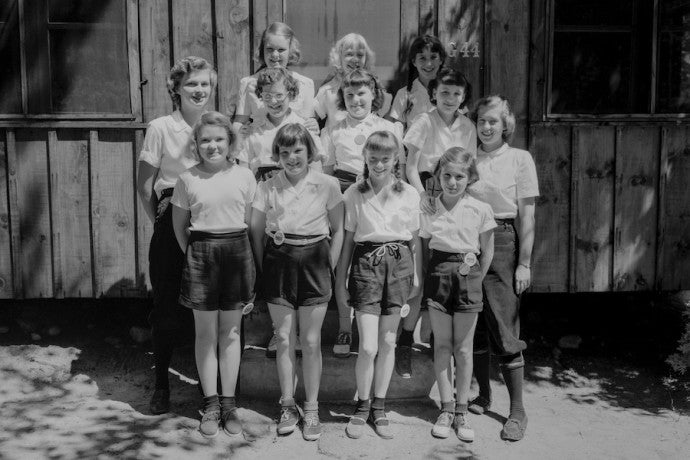
Ginger with her cabin at Arts Camp in 1950 (front row, 2d from right)
Ginger Lane (IAC 50, 52, 54-56) is a well-known name in the world of disability dance advocacy. A gifted dancer and choreographer, she was recently awarded the 2022 Distinguished Service to the Dance Field Award. Since 2003, she has been involved with MOMENTA’s groundbreaking disability-inclusive work, performing in several of their productions.
But beyond her artistic and professional achievements, Lane is a woman with a powerful story to tell. She’s a Holocaust survivor who lost her mother to Auschwitz, was adopted by an American family, and found companionship and healing during her summers at Interlochen Arts Camp. Now, she draws from her past experiences to fight against injustice everywhere.
From Bela to Ginger
Lane was born Bela Weber in Berlin, Germany, in 1939. She was the youngest of seven children of a Hungarian Jewish mother, Lina, and German father, Alexander. When the Gestapo arrested Lina, Alexander realized that he needed help to keep his family safe. A friend of his, Arthur Schmidt, offered sanctuary for the children.
“After my mother was taken,” Lane recounts, “he said to my father, ‘I've got this orchard 60 kilometers east of Berlin, and I don't see how you can take care of your seven children. Let me take them out there where they will be safe while you're working.’ Without them we would not have survived. We were scheduled to be on the next transport to Auschwitz.”
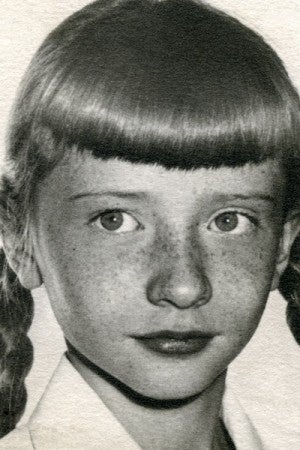
Ginger Speigel in 1952 (from her Arts Camp Application)
For two years, the Weber children lived in a laundry shed on the Schmidt farm, where Lane remembers being constantly hungry. Though their mother died in a concentration camp, the six girls and one boy survived the war. Afterwards, the children were separated from their father and sent to America as refugees. Despite all the trauma she had endured, Bela was a bright and expressive child—already a gifted dancer.
“On the ship coming over to America, we had dinner at the captain's table every night. I remember getting up on the captain's table and dancing for the dining room,” says Lane.
Soon after arriving in the United States, the Weber siblings went to live with different families across the country. Bela was adopted by I. Joshua and Rosalynde Speigel, and her name was changed to Ginger. The Speigels were an artistic couple who loved taking their young daughter to the theater, opera, and ballet. They noticed Ginger’s burgeoning talents and decided to send her to Interlochen.
Finding “family” at Interlochen
At Interlochen, Ginger studied dance and piano. She soaked in every aspect of the experience, from the “community and connectedness” she felt during the flag raising and Pledge of Allegiance every morning, to the lanyards she wove during craft time, to walking into town with friends each week to buy slices of cherry pie.
“I was exposed to wonderful things: piano lessons, swimming, and sports,” she remembers.
Most importantly, though, the young refugee found a lasting community. For a child who had lost her birth mother, it was vitally important that she had strong female role models in her life. Lane cites Interlochen’s Director of Dance, Hildegarde Lewis, as an important “substitute mother figure.”
“It was not only a camping experience, but Interlochen provided me with a family,” says Lane.
Interlochen is the reason that I've done whatever I've done.
Hildegarde Lewis also made an important career connection for Ginger. She urged her young student to study with Edna McRae, known as the grand dame of Chicago ballet.
“Interlochen is the reason that I've done whatever I've done,” says Lane. “It’s been a great life, and I owe it all to Interlochen because the Director of Dance got me to the right teacher in Chicago. That started everything for me.”
Fighting oppression with dance
After Interlochen, Ginger attended college at Northwestern University and earned a degree in theater and communication. She married, taking on the name of Lane. While caring for a son and two daughters, she continued to work in the dance world and was featured in multiple local performances. Lane choreographed shows at a nearby junior high school and became involved with community theatre. She also stayed physically active.
“I was on a baseball team, I played volleyball, I was an avid skier, and I played a lot of tennis,” says Lane.
In 1984, Lane suffered a skiing accident which put her in a wheelchair. But she was determined to keep dancing. Her career continued to flourish, and she soon found herself collaborating with high-profile organizations like the Joffrey Ballet of Chicago.
As she performed and choreographed, Lane became an outspoken advocate for dancers with disabilities.
“Dancers with disabilities add to the vibrancy of a dance culture,” says Lane. “Disability dance can contribute in a political sense, to fight oppression and discrimination so that we are seen as equals in the community.”
Reconnecting with the past
Even though she’d carved out a life for herself in Chicago, Lane never forgot her family’s roots. Recently, her daughter Beth Lane (IAC 95, 97-98) began work on a documentary film called Would You Hide Me? The film reunited all of the surviving Weber siblings to share their story of fleeing the Holocaust.
“It was both a painful and a joyful time, and perhaps a healing time because we really didn't talk about what happened to us for 40 years,” says Lane.
Speak out against oppression, speak out against hatred, and stand up for what you think is right.
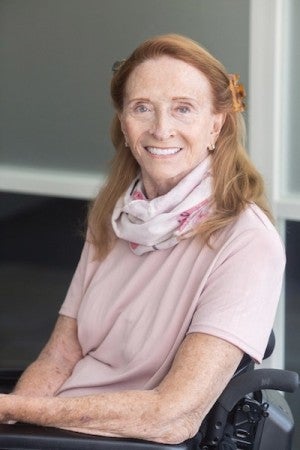
Ginger Lane
Early in 2022, Lane became a part of a campaign for Holocaust education on social media, #DontBeABystander. In all of her activism—through both disability dance and preserving her family’s history—Lane remains committed to seeking justice for oppressed people groups, no matter who they might be.
“I would share with the next generation the idea that everyone and everything has value in life,” she says. “I want people to educate themselves, to be open and accepting. Speak out against oppression, speak out against hatred, and stand up for what you think is right.”
At 83, Ginger Lane can look back on a life well lived. Her time at Interlochen was a vital part of the journey.
To learn more about Interlochen Arts Camp, click here.
